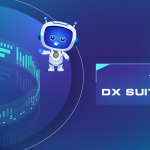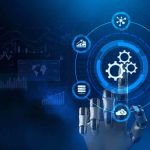Stacks of paper on desks. Endless emails with scanned attachments. Hours wasted retyping data into spreadsheets. For many businesses, this is still an everyday reality, and it’s costly, frustrating, and error-prone.
So, how can companies escape the grind of paperwork and manual tasks? Two technologies are making it possible: Robotic Process Automation (RPA) and Optical Character Recognition (OCR). They’re different tools, but together, they’re transforming how businesses handle information and get work done. This article will help you understand how they work individually and as a team, which is the key to transforming how businesses operate.
RPA and OCR: Understanding definitions and differences
Let’s start with RPA. Think of RPA as your digital workforce. It’s software that mimics the steps a human takes on a computer screen. For example:
- Copying data from one system to another
- Filling out online forms
- Generating reports
- Sending routine emails
The strengths of RPA are that bots can do these tasks faster, 24/7, and without human error. Companies utilize RPA to free employees from tedious tasks, allowing them to focus on problem-solving, creativity, and delivering exceptional customer service.
But there’s a catch. RPA bots can only work with digital, structured data. They can’t “see” inside a scanned PDF or a photo of a paper form. That’s where many processes hit a wall.
This is where OCR comes in. OCR, or Optical Character Recognition, is like giving software the ability to read text from images or scanned documents and turn it into digital, editable data. Whether it’s printed invoices, handwritten forms, or scanned contracts, OCR can extract the text so it can be used by other systems.
So the difference boils down to:
- RPA moves and processes digital data.
- OCR turns non-digital text into digital data.
For a detailed comparison, let’s look at the following table:
| Aspect | RPA | OCR |
| Main purpose | Automates repetitive, rule-based tasks on digital systems | Converts printed or handwritten text into digital data |
| Type of data | Works with structured, digital data | Works with unstructured, image-based, or scanned data |
| Typical use cases | – Data entry- Form filling- System integrations- Report generation | – Digitizing paper documents- Extracting text from scanned images or PDFs- Processing handwritten forms |
| Activities | Clicking, typing, copying, and moving files between systems | Reading text from documents and typing it into systems |
| Key strength | Executes processes quickly and accurately without fatigue | Converts non-digital content into machine-readable text |
| Limitations | Can’t process images or scanned documents without digital data | Only extracts data, can’t execute workflows, or automate tasks |
Simply put, while OCR makes non-digital data accessible, RPA automates processes using that data. Therefore, the combination of RPA and OCR enables end-to-end automation, even for workflows that start with paper or scanned documents.
A complete process where RPA and OCR work together
Consider a company that receives hundreds of invoices or more every month. Many arrive as scanned PDFs in email attachments. On their own:
- RPA bots can’t read the scanned images.
- Humans would have to open each invoice, read the details, and type them into the accounting system.
But combine OCR and RPA, and magic happens.
Step 1: OCR Takes Over
- Scans and reads the documents
- Extracts key data (names, dates, amounts)
- Converts text into structured digital formats like Excel or JSON
Step 2: RPA Takes Over
- Picks up data from OCR
- Validates info (e.g., matches invoices to purchase orders)
- Enters data into systems (ERP, CRM, accounting)
- Sends notifications or triggers further workflows
- Logs activities for compliance and tracking
Together, they transform slow, manual processes into fast, automated ones. Businesses save time, reduce errors, and free employees from tedious tasks.
Benefits of Combining RPA and OCR
Bringing RPA and OCR together unlocks powerful advantages for businesses looking to work smarter and faster. Key benefits include:
- Speeds up processing: Documents move quickly from scan to system.
- Boosts accuracy: Reduces errors from manual data entry.
- Frees up staff time: Employees can focus on more valuable work.
- Improves customer service: Enables faster responses and smoother operations.
- Makes documents searchable: Simplifies storage and retrieval.
- Enhances compliance: Creates clear, digital audit trails.
RPA and OCR can also be part of an even larger vision known as Intelligent Automation (IA), which combines cognitive technologies like machine learning, natural language processing, and advanced analytics. IA not only automates tasks but also helps businesses analyze data and make smarter decisions. In this bigger picture, OCR feeds digital data into the ecosystem, while RPA and other intelligent tools ensure that data flows wherever it’s needed.
Businesses no longer have to choose between staying manual or going digital. With RPA and OCR working hand in hand, companies can finally escape the paper trap and unlock faster, smarter, and more efficient operations.
WinActor RPA and DX Suite AI-OCR: A powerful combination
As businesses look to escape manual processes and embrace digital transformation, the combination of RPA and OCR offers a clear path forward.
NTT Data is proud to introduce Japan’s leading RPA and OCR solutions: WinActor and DX Suite. WinActor is an RPA tool that automates repetitive computer tasks, while DX Suite is a cloud-based AI-OCR solution that quickly digitizes and extracts text from complex documents.
WinActor RPA, integrated with DX Suite AI-OCR, delivers this powerful synergy. Together, they blend robotic automation with intelligent document reading, making tasks like invoice and purchase order processing faster and more accurate than ever. Even better, WinActor and DX Suite are designed to be user-friendly and accessible, even for those without deep IT expertise. With just a few clicks, businesses can transform paper-heavy workflows into seamless digital operations.
As a result, businesses can work more efficiently, save significant costs, and avoid human errors in complex data digitization. These two powerful tools have provided great value to hundreds of companies in industries like manufacturing, finance, healthcare, logistics, and public services.
Ready to see how WinActor and DX Suite can transform your processes? Contact us today to explore a free trial or personalized demo.





